The Right Decisions For Your New HomeWhile designing your house, selecting the contractor, and during construction you’ll be faced with hundreds of decisions. From the choices of floor coverings, tiles, bathroom fixtures, kitchen cabinetry, counter tops, light fittings and much more. It’s important to always focus on costs and know what your budget allows. However, it’s also important that your focus on costs doesn’t drown out other essential factors. Just because something is on sale or much cheaper than another item should never be reason enough to choose the product. Purchasing Building Materials For Your Home Building Project The Cheapest Contractor or Material Might Not Be Best For Your HouseWhen making your decisions you should consider:
The Wrong Decision Could Ruin Your New HomeUnfortunately, frequently owners become so focussed on costs that their new home becomes a mishmash of clashing ideas and colours which have been selected purely because they were the cheapest or the products were on sale. The vision of that dream home with your favourite colours could turn into a nightmare containing colours that nobody likes, least of all when they’re mixed together. Of course this doesn’t mean that you shouldn’t purchase items that are on sale, or use second-hand items, rather that these should be appropriate and fit the house’s style and décor without compromising quality. Nor should you be so fixated on a brand or particular item that you overlook or ignore products and materials which are cheaper, but which will be just as suitable. 7 Tips for Home Renovation on a Budget For more Read Budget your new home build and renovation project and Read This Before Selecting Your Home Renovation and Building Contractor.  This is an extract from the author's book 'An Introduction to Building and Renovating Houses: Volume 1 Hiring Contractors, Managing Construction and Finishing Your Home'. Want to learn more about designing, renovating and building houses?Paul Netscher has written 2 easy to read books 'An Introduction to Building and Renovating Houses - Volumes 1 and 2'. An Introduction to Building and Renovating Houses Volume 1 deals with Hiring Contractors, Managing Construction and Finishing Your Home. and Designing your ideal home Volume 2 deals with Finding Your Ideal Property and Designing Your Dream Home.
("Great for those that DIY. Very helpful in home renovations!" said a Reader on Amazon.com 5*****) These books are available from Amazon and other online bookstores in paper and ebook.
0 Comments
Do you have enough money to complete your construction project?Many people start constructing their new house, or renovating their home, with great excitement, only to find that they run out of money before they can complete construction. What a disappointment to be left with a half completed house. But it is often more than disappointment. Money problems often leads to other problems. There's stress, marital problems, and in the worst case banks can seize properties which were held as surety against loans. Yes, that's right, people have even lost their partially built home, or even the house that they're currently living in. If you're able to survive the money issues, and the worst case the project is only delayed until your money situation improves, then their are often additional costs to complete your project. These costs could include employing another contractor to take on the half completed project. Often this could mean that warranties on work already completed is lost. During the delay your project could have been damaged by the weather or even vandalised. Then there could be additional costs of paying rent to live elsewhere, council rates, security and insurance, cost of restarting the project, etc. Reasons why you could run out of money before your home is completeMany people run out of money because they did not allow for all the costs. In Have you allowed for all the costs of your new home build? Part 1 and Have you allowed for all the costs of your new home build? Part 2. we looked at the costs to allow in your budget. Some times people have not looked at what their contractor priced, and then are surprised to have to pay extra to get features they thought were included. See Checking Your Contractor's Price (Quotation) and Read This Before Selecting Your Home Renovation and Building Contractor. and What’s included in your builder's price (or excluded) Sometimes projects hit unexpected snags or problems Questions to ask before starting a home renovation, or building a new house Then sometimes you have enough money for the project, but you don't have it right now to pay the bills. This is called cashflow problems which we look at in a future article. Preparing a budget for your home renovation or new houseBudgets involve not only what the project will cost, but also when these payments are due. It’s important to understand the construction schedule as well as the payment terms of all suppliers and subcontractors. (Read about cash flow later.) Late payment could lead to work stopping, supplies of materials being cut off, and you could incur additional costs, including losing discount provisions and incurring interest payment charges. The construction and other project costs are paid from money you have in the bank, money from the sale of assets (like another home) and payments from bank loans. It’s important to understand when these funds will be received. Funds from the sale of assets can take time to be received and these transactions frequently take longer than envisaged. Of course, there’re often pitfalls along the way, for instance sales could fall through even after everything appears settled. Banks seldom pay loan funds out as a lump sum at the start of the project. The release of funds usually depend on the project reaching particular milestones and on the quality and progress of the project being checked by the bank’s representative. Banks may also require to see copies of insurances, invoices, permits and contract documents before releasing funds. It’s important to understand all the conditions relating to the loan. Inevitably there will be delays in the process and bank holidays can play havoc with your best laid plans. But equally, it’s important to understand what other costs will be incurred. There are the usual costs of managing your monthly household bills, but invariably there’ll be unexpected costs, such as illness, cars breaking down, unexpectedly high bills, and certainly your monthly costs will increase with time. In addition, there’ll be additional project costs that weren’t allowed. There will be some changes and variations. It’s important to accurately calculate the project costs, including all the items discussed in the next section. These costs should be regularly checked and as the actual costs come in the numbers should be updated. Once the project starts it is good practice to update the budget every week. This involves ensuring that all suppliers and contractors submit their invoices and variations regularly and that you make allowances for those invoices and variations which you haven’t received. A good budget is essential for your construction projectPreparing an accurate budget at the start of your home renovation or construction project, a budget that allows all the costs, will help ensure you don't run out of money before your house is completed. But, more than a good budget is needed. You must continually update your budget as the project proceeds. There will always be unexpected costs, both additional construction costs, and your daily living costs. Regrettably things do go wrong and circumstances can change. Continually updating your budget will allow you to make timely changes should it become apparent that you could run out of money before the project is completed.  This is an extract from the author's book 'An Introduction to Building and Renovating Houses: Volume 1 Hiring Contractors, Managing Construction and Finishing Your Home'. Want to learn more about designing, renovating and building houses?Paul Netscher has written 2 easy to read books 'An Introduction to Building and Renovating Houses - Volumes 1 and 2'. An Introduction to Building and Renovating Houses Volume 1 deals with Hiring Contractors, Managing Construction and Finishing Your Home. and Designing your ideal home Volume 2 deals with Finding Your Ideal Property and Designing Your Dream Home.
("Great for those that DIY. Very helpful in home renovations!" said a Reader on Amazon.com 5*****) These books are available from Amazon and other online bookstores in paper and ebook. Extending your houseAdding on new structures to an existing house poses a number of challenges.
In our house we undertook renovations in the main bedroom. This involved moving a few walls slightly and the timber floor had to be patched in a couple of places. Firstly we had to find the exact same timber for the patches. Then the complete bedroom floor had to be sanded and sealed. But the timber floor continued from the bedroom out the door through the whole upper level floor. The newly sanded and treated floor was always going to have a different colour from the original floor which had aged in the sun and with use. We eventually had to sand and seal all the existing timber floor upstairs to achieve a uniform coloured floor – about one hundred square metres (a thousand square feet) because one square metre (ten square feet) had to be patched! Extending your home is not always simpleAs we have previously discussed always be careful when cutting new openings in existing walls or removing existing walls you do not want to damage your home like in this example House collapses during renovations so see these important tips Before removing walls or adding new windows and doors check your house will not fall down and Restrictions which could impact your home renovation plans There are often potential problems which are hidden, additional costs which you only see when you connect the additions and new portions to your existing house. Proper planning and thought can help avoid some problems. Sometimes you must allow for the additional costs of altering existing floor finishes and repainting roofs and walls.  This is an extract from the author's book 'An Introduction to Building and Renovating Houses: Volume 1 Hiring Contractors, Managing Construction and Finishing Your Home'. Want to learn more about designing, renovating and building houses?Paul Netscher has written 2 easy to read books 'An Introduction to Building and Renovating Houses - Volumes 1 and 2'. An Introduction to Building and Renovating Houses Volume 1 deals with Hiring Contractors, Managing Construction and Finishing Your Home. and Designing your ideal home Volume 2 deals with Finding Your Ideal Property and Designing Your Dream Home.
("Great for those that DIY. Very helpful in home renovations!" said a Reader on Amazon.com 5*****) These books are available from Amazon and other online bookstores in paper and ebook. I am sure you have all done a spot of painting in your home and then spent several hours afterwards cleaning up paint spills and splashes where paint should not have been. Those of you who are less handy may have attempted a small repair job, only to end with a bigger mess than there was before you started. Renovating portions of an existing house can result in damage to the rest of the house. This damage results in additional costs. Even supposed competent building contractors have been known to damage existing homes because a workman was careless or the work was left unsupervised. Unfortunately damage can often be easily caused. Some damage might not even be immediately visible and only discovered after the contractor has moved off site. How your home is damaged during renovation and building workTypical causes of damage and additional costs incurred during renovation and building work to your home includes.
Do not create extra work when renovating your homeTaking a few extra precautions will prevent many of the causes of damage. Important is to keep an eye on your contractor. Do not be afraid to remind them to be careful, and immediately point out things that concern you. Good communication with your building contractors is vital If your contractor knows that you are watching they will usually take a little extra care. How to Make Your Home Secure When Remodeling and Renovating your Home Repairing damage to areas which are not being renovated results in additional costs, it sometimes leaves a permanent scar which can't be repaired, it's annoying, and it can cause further inconvenience to you. Of course you also would not want a precious heirloom or most loved possession to be damaged by careless workers - something that is irreplaceable to you. Before starting your home building project check your insurance Want to learn more about designing, renovating and building houses?Paul Netscher has written 2 easy to read books 'An Introduction to Building and Renovating Houses - Volumes 1 and 2'. An Introduction to Building and Renovating Houses Volume 1 deals with Hiring Contractors, Managing Construction and Finishing Your Home. and Designing your ideal home Volume 2 deals with Finding Your Ideal Property and Designing Your Dream Home.
("Great for those that DIY. Very helpful in home renovations!" said a Reader on Amazon.com 5*****) These books are available from Amazon and other online bookstores in paper and ebook. |
AuthorI’m a construction professional, author of several successful construction management books, and a home owner. I’ve made mistakes in construction management, I’ve seen others make mistakes, but importantly I’ve had multiple successful construction projects and I’ve learned from the mistakes. I want to share these lessons and my knowledge with you. Also available from:
Amazon Au, Amazon DE, Amazon ES, Amazon CA, Amazon IT, Amazon FR, Amazon NL, Amazon India and 'An Introduction to Building Houses - Volume 2 Finding Your Ideal Property and Designing Your Dream Home'
Archives
July 2024
CategoriesWe welcome genuine comments, especially comments that add additional information to the subject matter in the article. We however reserve the right to remove inappropriate comments, which includes comments that have nothing to do with the subject, comments that include inappropriate language, and comments that are an advertisement for a product or company, or which include an advertising link. Comments must be in English. We will not enter into discussion on why a particular comment was removed.
|





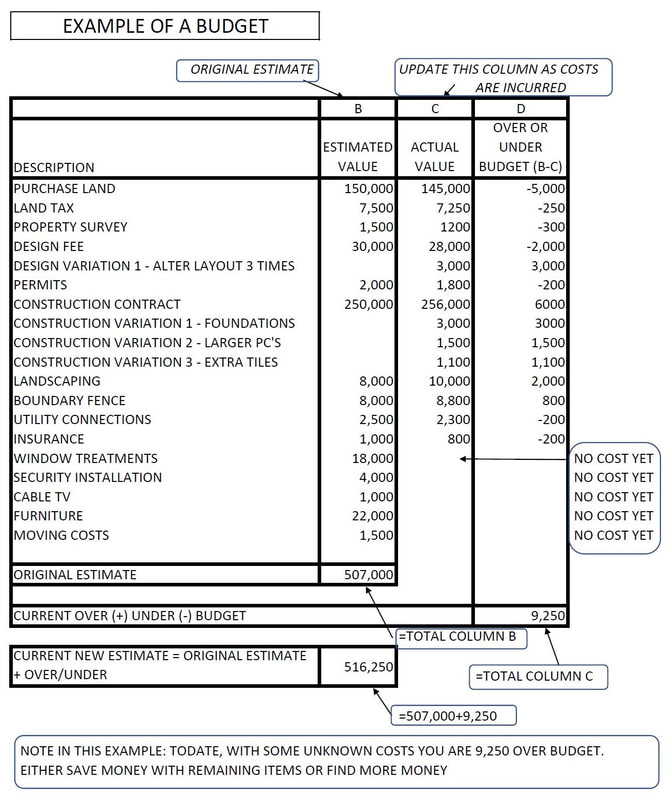

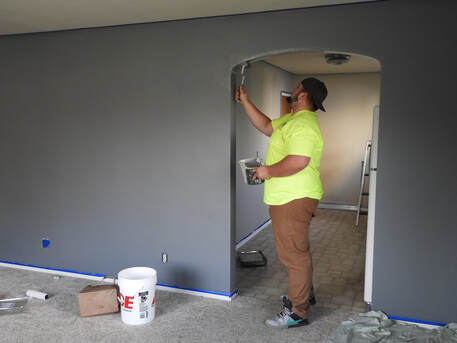
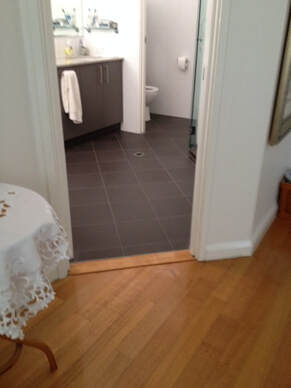


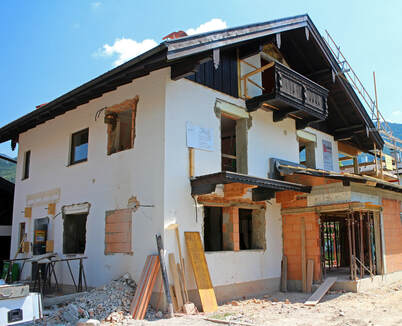
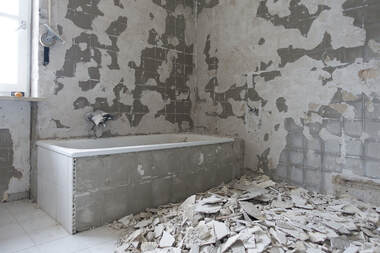




 RSS Feed
RSS Feed


